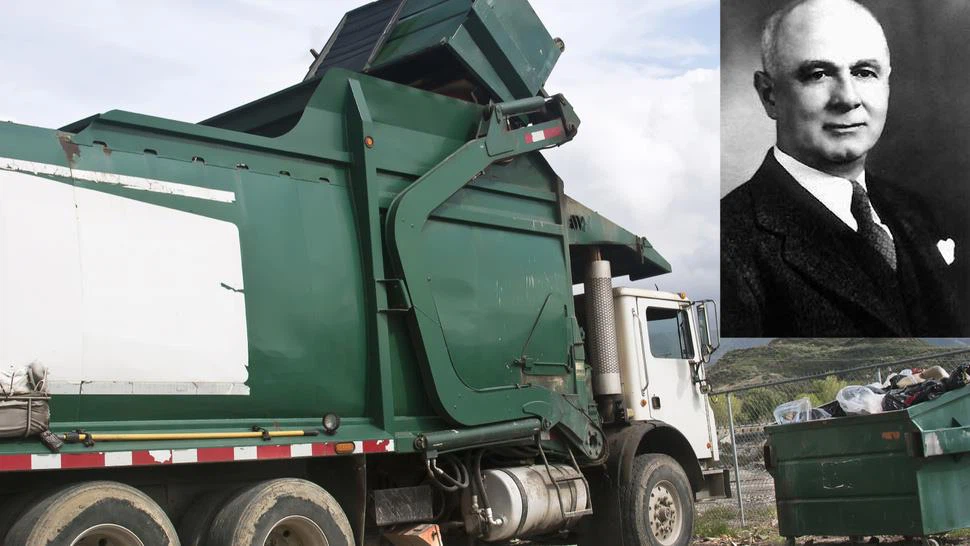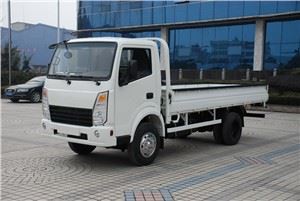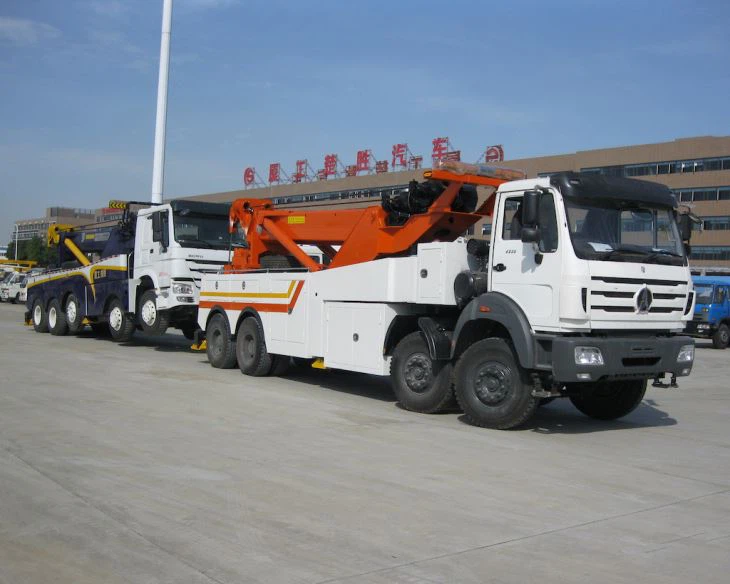Everything You Need to Know About Thrash Trucks

Introduction
A thrash truck is an essential vehicle that plays a crucial role in waste management and environmental maintenance. These trucks are designed specifically to collect and sometimes transport waste materials. Understanding how thrash trucks work, their types, and their environmental impacts is vital for anyone interested in waste management practices. This article will explore the various facets of thrash trucks, including their operational mechanisms, benefits, and importance in sustainable waste disposal.
What is a Thrash Truck?
A thrash truck, often referred to as a garbage truck, is a motor vehicle used for transporting refuse or recyclable materials. These trucks can vary widely in design and size, accommodating different types of waste and operational needs.
Features of a Thrash Truck
The design of a thrash truck includes several key features:
- Compaction System: Most thrash trucks include a compaction mechanism that reduces the volume of waste, allowing for more efficient collection.
- Lift Mechanism: Many modern trucks have hydraulic lifts to easily grab waste bins from curbsides.
- Storage Capacity: The capacity varies significantly, with trucks designed to hold anywhere from a few cubic yards to several tons of waste.
Types of Thrash Trucks
Thrash trucks come in various types, each serving specific purposes. Let’s explore the most common varieties.
Front-Loading Trucks
Front-loading trucks are equipped with a hydraulic lifting system at the front. They are ideal for commercial waste collection in businesses that use large dumpsters.
Advantages:
- Efficient for high-volume collection.
- Easy access to the waste bin from the front.
Rear-Loading Trucks
These trucks are designed so waste is loaded from the back. They are commonly used for residential waste pickup.
Advantages:
- More compact and can navigate tighter spaces.
- Simple design enhances ease of operation.
Side-Loading Trucks
Side-loading trucks have the capability to pick up bins from the side of the truck. They often come equipped with robotic arms that can lift and dump waste.
Advantages:
- Increases efficiency in residential areas.
- Minimizes the need for multiple personnel during collection.
The Importance of Thrash Trucks in Waste Management
Thrash trucks are indispensable in maintaining clean environments. Here’s a closer look at their significance:
Waste Collection
Without thrash trucks, waste collection would be inefficient and chaotic. These vehicles ensure timely and systematic collection of refuse, reducing the amount of litter in public spaces.
Public Health and Safety
Proper waste disposal is directly linked to public health. Thrash trucks help mitigate health hazards posed by improper waste disposal, such as disease outbreaks and pest infestations.
Environmental Sustainability
Thrash trucks contribute to recycling efforts by efficiently separating recyclables from general waste. By doing so, they play a crucial part in promoting recycling and reducing landfill waste.
Operational Mechanisms of Thrash Trucks
Understanding how a thrash truck operates can give insight into its efficiency and utility in waste management.
Loading Mechanisms
Thrash trucks employ various loading mechanisms, including manual, semi-automatic, and fully automatic systems, significantly benefiting operational efficiency. Some key points include:
Manual Loading
Operators physically throw waste into the truck. This method is labor-intensive but effective in areas with sporadic waste disposal.
Semi-Automatic Loading
This method employs automated arms that help lift bins into the truck while still requiring some human intervention.
Fully Automatic Loading
In this method, robotic systems do all the work, reducing the need for multiple crew members and ensuring a quicker turnaround.
Compaction Systems
Compaction systems in thrash trucks serve to compress waste materials, maximizing the truck’s capacity and minimizing the number of trips to the landfill.
Challenges Faced by Thrash Trucks
While thrash trucks significantly enhance waste management efficiency, they also face several challenges:
Traffic Congestion
Thrash trucks often operate in busy urban areas, causing delays and traffic disruptions. Scheduling pickups during off-peak hours can help mitigate this issue.
Environmental Regulations
Thrash truck operators must comply with numerous environmental regulations that govern emissions and waste disposal methods. Staying up-to-date with regulations is crucial for operators.

Maintenance and Repair
Due to heavy usage, thrash trucks require regular maintenance and occasional repairs, which can lead to downtime and potential disruptions in service.
Innovations in Thrash Truck Technology
Technological advancements aim to improve the operation and efficiency of thrash trucks. Here are a few innovations that are transforming the field:
GPS Tracking
Many modern thrash trucks are equipped with GPS tracking systems. This allows fleet managers to monitor routes and optimize collection schedules, reducing fuel consumption.
Smart Waste Collection
Smart waste technology uses sensors in bins to detect the levels of waste. This helps optimize collections by only sending trucks to full bins, reducing unnecessary driving and labor costs.
Electric and Hybrid Trucks
The shift toward electric and hybrid thrash trucks is gaining momentum. These vehicles produce fewer emissions, helping cities move towards more sustainable waste management practices.
Tips for Effective Waste Management Using Thrash Trucks
Here are some practical tips for communities to enhance waste management through the effective use of thrash trucks:
Educate Residents
Educate the community about proper waste segregation and disposal practices. This can lead to higher recycling rates and more efficient thrash truck operations.
Schedule Regular Collections
Implement a regular collection schedule to minimize overflow and keep streets clean, which ultimately results in fewer trips for the thrash trucks.
Utilize Technology for Route Optimization
Leverage technology to optimize routes and schedules for the thrash trucks to save time and reduce fuel consumption.
Cost Implications of Thrash Truck Operations
Understanding the costs associated with operating thrash trucks can help municipalities and companies better allocate resources.
Initial Purchase and Maintenance Costs
The initial costs of purchasing thrash trucks can add up, considering the maintenance and operational expenses involved. Regular servicing is necessary to ensure longevity and efficiency.
Fuel Costs
Fuel is a significant operational cost for thrash truck fleets. Transitioning to electric or hybrid models can help offset these costs in the long run.
FAQs
What is the average lifespan of a thrash truck?
The average lifespan of a thrash truck is about 10-15 years, depending on maintenance and usage patterns.
How often should thrash trucks collect waste?

In urban areas, thrash trucks typically collect waste 2-3 times a week, while rural areas might have collections only once a week or biweekly.

What kind of waste can thrash trucks collect?
Thrash trucks can collect a variety of waste, including residential household waste, yard debris, construction materials, and recyclables, depending on local regulations.
How can municipalities improve waste collection contracts for thrash trucks?
Municipalities can negotiate contracts that include performance benchmarks, environmentally-friendly practices, and flexible scheduling. This ensures quality service and adherence to sustainability guidelines.
Are there any eco-friendly thrash truck options?
Yes, some companies offer electric or hybrid thrash trucks designed to minimize emissions and reduce environmental impact.
What should be done to ensure the proper operation of thrash trucks?
Regular maintenance checks, driver training programs, and adherence to safety protocols are essential for ensuring the proper operation of thrash trucks.
Conclusion
Thrash trucks serve a critical function in waste management and public health. Their various designs and operational mechanisms demonstrate their adaptability to changing needs and technologies. As communities continue to grow, the evolution of thrash trucks will play a pivotal role in creating cleaner, sustainable environments.
